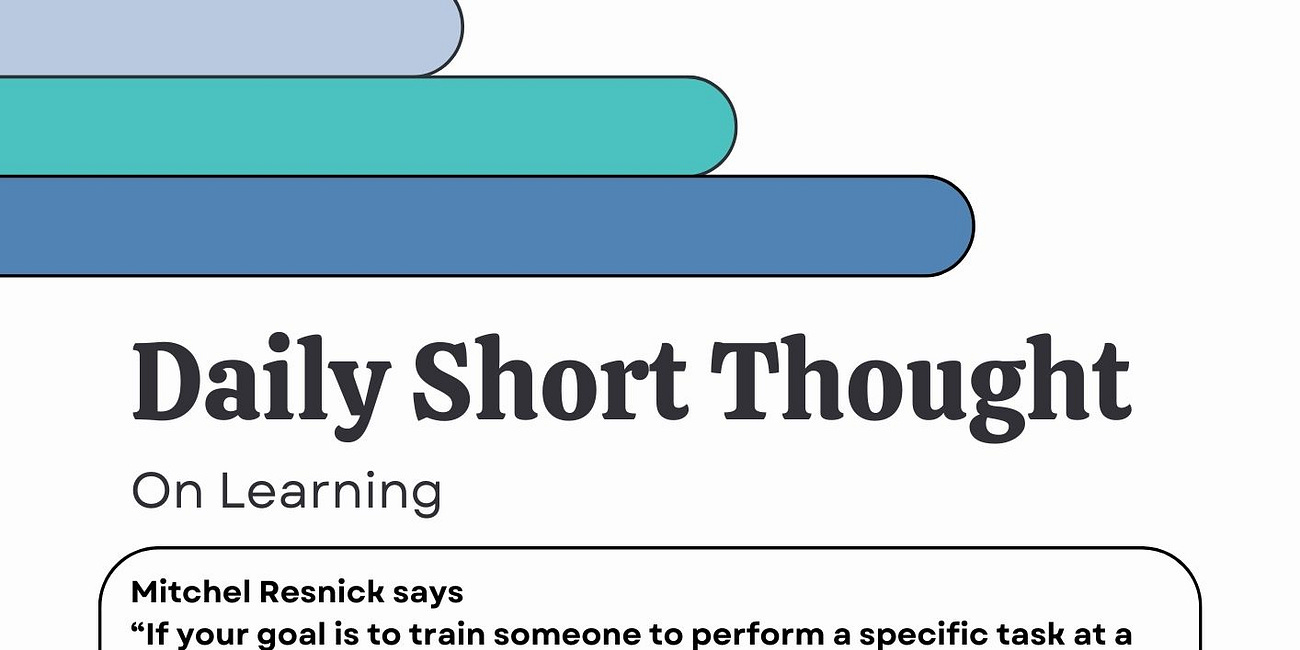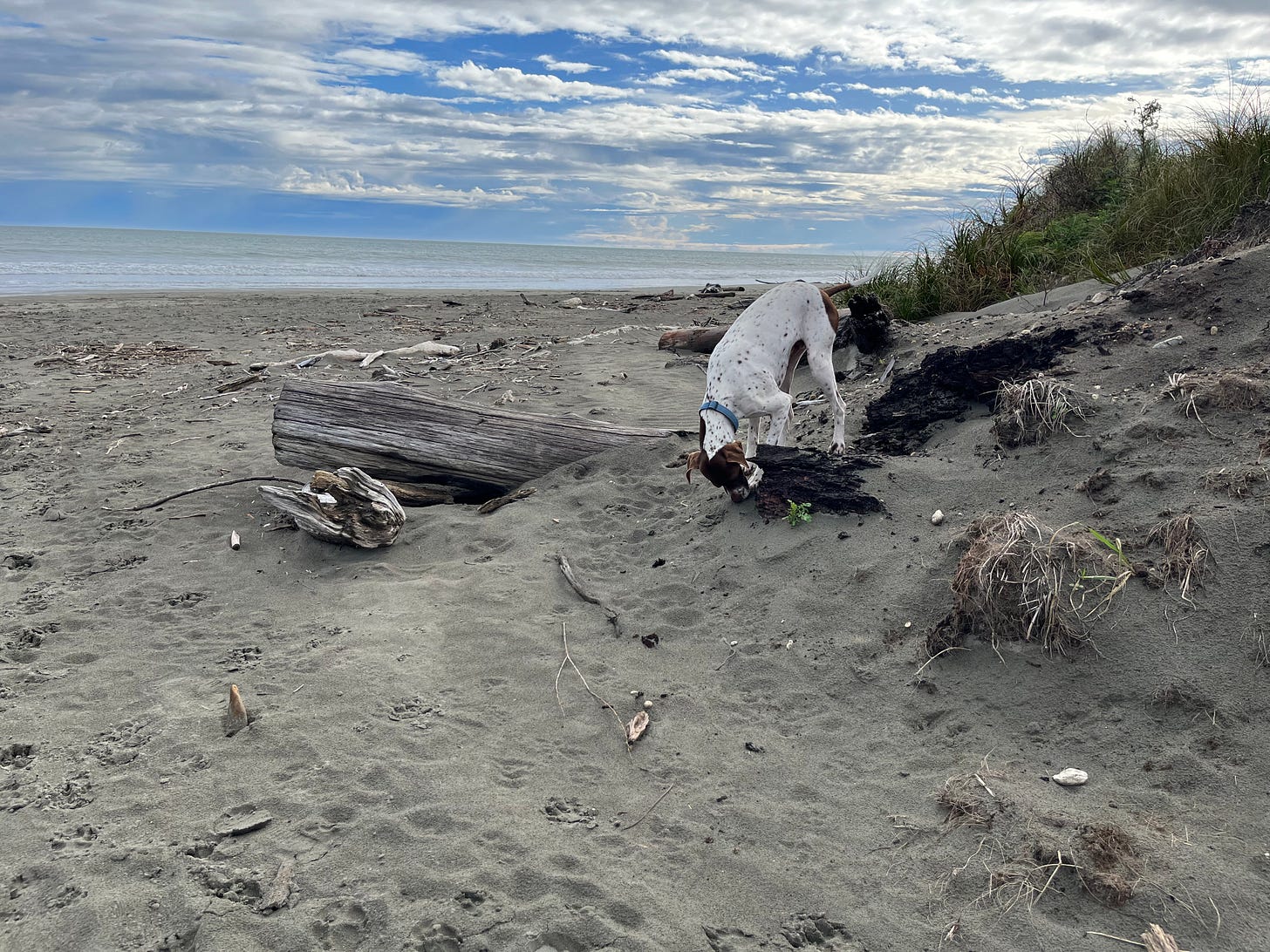On Learning Letter #1
Transformational learning is dependent on creating conditions for intrinsic motivation
Dear fellow wanderer across the transformational learning landscape,
I hope you’ll forgive me, but I have a job for you.
I’ve discovered (learned 😉) that I can add sections to On Learning. That’s made me think about how I can use them to give you some choice about what and how often you find me in your inbox.
Your job: Decide what On Learning sections you want to have land in your inbox. Here’s how you do this:
Go to Substack on the web and log in.
Click on your profile (top right).
Select “Settings”.
Scroll down until you get to “Subscriptions”.
Select “On Learning”.
Under “Notifications”, toggle on (green) for the sections you want to get - this means you’ll get an email and/or they’ll appear in your Substack inbox each time I post something in them. Toggle off for those you don’t - you can still read them on the
site.
The sections I’ve created are:
On Learning Letter (free)
Good if you want to stay in touch with On Learning but aren’t keen on the daily bombardment.
On the 1st and the 16th of each month, a letter will arrive in your inbox exploring an aspect of the transformational learning landscape.
(This is the first post in this section - they will take this structure and often build on one of the Daily Short Thoughts).
Daily Short Thought (free)
Good if you want some daily ‘inspiration’ or nudging.
Every weekday, a thought on learning will land in your inbox, stimulated by a quote from that week’s focus reading (a book, article, or other reliable and interesting sources).
Emerging Emergences (free)
Good if you like longer reads that range across disparate aspects of learning and don’t mind the odd provocative message.
(Yes, emergences, not emergencies - although sometimes they feel like that!)
Irregularly scheduled, sometimes vaguely formed notions about learning and education, but always about something that’s inspiring me. These may be highly opinionated or reach for the stars. Maybe both.
Paid Section (paid)
Good if you want to build your practice and apply some of the ideas explored in On Learning.
How-to guides (there’s a collection already there: How to … add structure to play | … observe | … make learning visible | … create a learning playground, etc).
Community threads.
Right - now you’ve read all that, it’s time to go and do your job 🙂
Off you go …
Once you’ve done it, here’s something for you to read about intrinsic motivation👇
We have a shot at transformational learning when …
… we create conditions conducive to intrinsic motivation.
When I wrote, in this Daily Short Thought
The demise of the intrinsic
Today I’m thinking about the world we’ve created for kids to grow up in.
that the space for intrinsic motivation has been squeezed out, I was also trying to suggest that what has replaced it - the gamified world of goal-oriented, externally-determined, reward-focused pursuits - is not a like-for-like replacement.
An extrinsically motivated pursuit is a completely different emotional experience from an intrinsically motivated one. It is sustained by adulation, adoration and approval. Insecurity pervades the experience. We all know of people (and perhaps have even been one of those people) whose sense of self was almost wholly dependent on what others said or thought.
It’s a really insecure, tenuous place.
And yet, here we are,
amidst education systems where a kid’s entire identity is determined by how well they measure up
where the point of extra-curricular activities is to get to elite levels of performance
in a culture that worships your productivity and wants you to prove it
in a world so scared of boredom it’s now more socially acceptable to put a device in a kid’s hand than it is to let them climb a tree or ride a bike down the street.
… A whole burgeoning life shaped by what others want. This is the norm.
Where is the space now for a kid to get to know themself? Because this doesn’t happen when they’re rushed from one context for external approval to another. That inner space where they find themselves is the source of intrinsic motivation.

Creating the conditions for intrinsic motivation
There’s only one surefire way for kids to inhabit this inner space where intrinsic motivation can flourish: play.
Play gives them time to dwell within, to explore those inner worlds and bring them to light and to life, to feel the calm that comes from the security of getting to know themselves, to learn how to focus deeply, to find delight in the world around them and slowly find a place for who they are within it.
As a teacher, you can tap into this world. But to do that, you’ve got to be attuned and responsive to what the kids are showing you. You need to adopt an attitude that goes something like this:
Hey, you’re into that? That’s awesome!
There’s so much to explore and learn about it! Can I help? 😀
But it’s not all sunshine and roses.
Lately, I’ve been thinking a lot about the adult world’s fear of play. It’s denigrated by many; we only denigrate things we’re scared of. So what is it we’re scared of? Is this extrinsically-oriented world built to make us, the grown-ups, feel safe?
And we mustn’t think the answer here is to just say to kids, ‘Go for it - you can play and take charge of your own experience now!’. This doesn’t work, as many teachers who’ve tried to tap into intrinsic motivation have found. Too few kids have felt the peace and power of the intrinsic, their whole lives being acted out at the behest of others. They need time to get to know themselves.
It might not go according to our schedule, but isn’t that the one essential transformation anyone needs?
Did you know …
Sugata Mitra encouraged people to use what he called the “Granny Method” to support ‘independent’ learning.
What is it?
Nothing more complicated than what a granny does. He describes it this way in his TED talk:
"Stand behind them. Whenever they do anything, you just say, 'Well, wow, I mean, how did you do that? What's the next page? Gosh, when I was your age, I could have never done that.' You know what grannies do."
Here’s the talk in full, for which he won the TED Prize in 2013.
Pluto says
“Time spent digging in the dirt is time well spent. Woof!!!”




